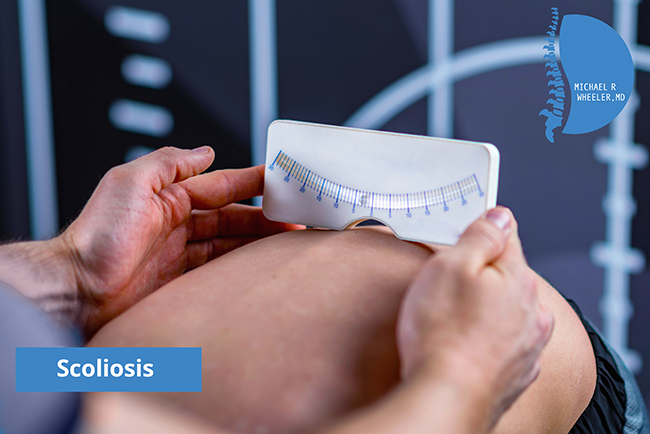What is Scoliosis?
Scoliosis is abnormal curvature of the spine. Scoliosis can occur anywhere along the spinal column, but it most commonly occurs in the thoracic and lumbar spine. Scoliosis can arise in childhood, adolescence, or most commonly, can occur with age as the spine degenerates. Scoliosis comes in different degrees of severity and sometimes is very mild and only apparent on x-rays. On the other hand, scoliosis can be severe causing significant physical deformation and pain.
 What symptoms does scoliosis cause?
What symptoms does scoliosis cause?
Scoliosis can cause a wide variety of symptoms, but it most commonly causes some degree of back pain. Patients may notice progressive deformity: they may notice that they look different in the mirror or that their clothes fit differently over time. Sometimes, patients may notice that one shoulder is higher than the other or that his/her ribs are more prominent on one side. Patients with scoliosis can also experience problems related to the nerves in the spine, which can present as lumbar radiculopathy or spinal stenosis.
How is scoliosis diagnosed?
Scoliosis is usually diagnosed on x-rays alone. Scoliosis series x-ray takes an x-ray of the entire spine and allows for comprehensive examination of the severity of the scoliosis instead of only looking at a portion of the spine individually (i.e. lumbar or thoracic x-rays alone).
How is scoliosis treated?
Scoliosis is usually initially managed conservatively with observation and physical therapy. In adolescent scoliosis, the body is still developing quickly, and the curve can sometimes progress quite rapidly. Adolescent scoliosis is sometimes treated with bracing depending upon the severity of the curve at the patient’s maturity. As an adult, scoliosis does not require surgical intervention most the time. In situations where the scoliosis is significant or causing significant impact on quality of life, surgical invention should be a discussed.



